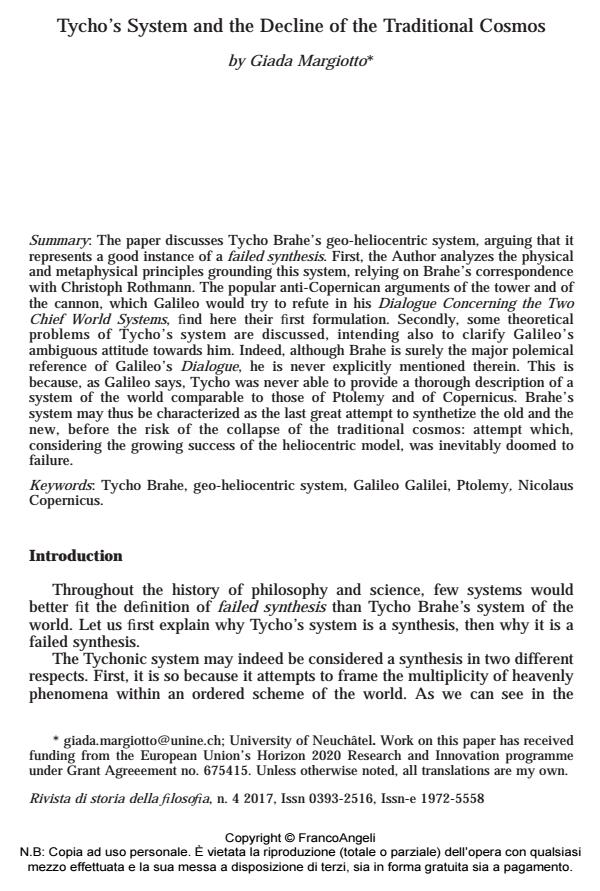Tycho’s System and the Decline of the Traditional Cosmos
Titolo Rivista RIVISTA DI STORIA DELLA FILOSOFIA
Autori/Curatori Giada Margiotto
Anno di pubblicazione 2017 Fascicolo 2017/4
Lingua Inglese Numero pagine 9 P. 607-615 Dimensione file 36 KB
DOI 10.3280/SF2017-004006
Il DOI è il codice a barre della proprietà intellettuale: per saperne di più
clicca qui
Qui sotto puoi vedere in anteprima la prima pagina di questo articolo.
Se questo articolo ti interessa, lo puoi acquistare (e scaricare in formato pdf) seguendo le facili indicazioni per acquistare il download credit. Acquista Download Credits per scaricare questo Articolo in formato PDF

FrancoAngeli è membro della Publishers International Linking Association, Inc (PILA)associazione indipendente e non profit per facilitare (attraverso i servizi tecnologici implementati da CrossRef.org) l’accesso degli studiosi ai contenuti digitali nelle pubblicazioni professionali e scientifiche
The paper discusses Tycho Brahe’s geo-heliocentric system, arguing that it represents a good instance of a failed synthesis. First, the Author analyzes the physical and metaphysical principles grounding this system, relying on Brahe’s correspondence with Christoph Rothmann. The popular anti-Copernican arguments of the tower and of the cannon, which Galileo would try to refute in his Dialogue Concerning the Two Chief World Systems, find here their first formulation. Secondly, some theoretical problems of Tycho’s system are discussed, intending also to clarify Galileo’s ambiguous attitude towards him. Indeed, although Brahe is surely the major polemical reference of Galileo’s Dialogue, he is never explicitly mentioned therein. This is because, as Galileo says, Tycho was never able to provide a thorough description of a system of the world comparable to those of Ptolemy and of Copernicus. Brahe’s system may thus be characterized as the last great attempt to synthetize the old and the new, before the risk of the collapse of the traditional cosmos: attempt which, considering the growing success of the heliocentric model, was inevitably doomed to failure.
Parole chiave:Tycho Brahe, geo-heliocentric system, Galileo Galilei, Ptolemy, Nicolaus Copernicus
Giada Margiotto, Tycho’s System and the Decline of the Traditional Cosmos in "RIVISTA DI STORIA DELLA FILOSOFIA" 4/2017, pp 607-615, DOI: 10.3280/SF2017-004006